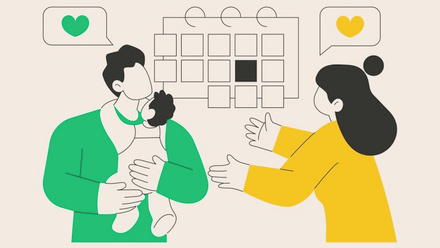3 digital innovations to make your benefits package more inclusive
Taking a one-size-fits-all approach to employee health and wellbeing risks missing the nuances that matter to your staff.
For example, a cycle-to-work scheme is a great way to promote physical activity. But without suitable alternatives for colleagues physically unable to ride a bike to work, it can feel like an isolating checkbox exercise rather than a helpful workplace benefit.
HR professionals are turning to emerging technologies to guide and enhance employee health and benefits plans. Monitoring, analysing and leveraging employee data lets you personalise plans while improving the efficacy, equity and cost across the board.
Technology can empower individuals
A good benefits package encourages a healthy, engaged and productive workforce. It fosters loyalty, reduces presenteeism and absenteeism and helps combat stress, anxiety and burnout.
However, it’s often easy to overlook the individual when trying to help the collective. It’s time to accept that everyone’s experience is different. A fixed offering is no longer enough in 2024.
For example, according to the CIPD 2023 Health and Wellbeing at Work Report, employers must do more to support employees through serious life-changing circumstances. Of those surveyed, only 46% of employers offered support for menopause transition. Meanwhile, 47% were offering help with chronic health conditions or disabilities, and 37% provided support with pregnancy loss.
This is where digital health and wellbeing innovations can ride to the rescue. Combining technology like artificial intelligence, machine learning and analytics tools can help employers close those gaps, individualise benefits and increase inclusion.
3 digital health and wellbeing innovations to make your benefits programmes more inclusive:
1. Wearable devices
Smartwatches and fitness trackers help wearers identify potential health issues and take preventative measures before treatment is needed. However, several studies suggest that wearables also empower individuals by motivating behavioural changes and encouraging self-monitoring.
By putting the power into employees’ hands, they can gather insights about their health, such as heart rate or sleep patterns, giving them a jumping-off point to engage with personalised wellbeing tips or seek advice.
Once individuals start advocating for their health, you can seek feedback on the gaps within your wellbeing strategy, ultimately helping you shape a fairer, more inclusive benefits plan.
2. Benefits data analysis and monitoring
As well as employee feedback, you have a treasure trove of information in employee benefits data to leverage.
For example, by monitoring usage stats by minority groups, you can gain a greater insight into the effectiveness of the healthcare apps and employee assistance programmes (EAP) you employ.
You can benchmark your internal data against external diversity, equity and inclusivity metrics to identify where improvements need to be made and ensure equity and equality in all aspects of your plan.
3. Artificial intelligence and machine learning
As organisations grow, so does the volume of data to analyse and comprehend. HR professionals need a helping hand. Enter artificial intelligence (AI) and machine learning (ML).
AI can recognise patterns, make decisions and offer recommendations, just like humans. However, AI technology can also process vast amounts of data in the blink of an eye.
ML uses data and algorithms to copy how people learn. Over time, it improves its accuracy based on the data input (just like the autocorrect function on your smartphone).
AI and ML can transform employee engagement and benefits administration by handling time-intensive and repetitive tasks like survey creation and data analysis. You can access real-time stats about employee health, wellbeing, attendance and performance and pinpoint the differing needs among your workforce.
Putting insights and learnings into practice will help make benefits plan more inclusive to a range of life stages, personal circumstances and ailments while reducing its risk of being underused or undervalued.
How to promote equitable and inclusive wellbeing
The key to using new digital health and wellbeing innovations is providing employees with relevant and flexible benefits that offer true value and support inclusion.
FlexGenius is an employee benefits platform that lets users combine the best and most innovative health and wellbeing benefits in one place. The customisable software means you can create and tailor new benefits packages to your organisation’s evolving demographics, with the flexibility to change as your level of employee insights grows.
By leveraging emerging technologies, HR professionals can reduce time-consuming tasks, improve data analysis, identify key trends, gaps and opportunities and build a progressive and inclusive health and wellbeing strategy.
Supplied by REBA Associate Member, Avantus
Flexible Benefits & Technology specialist providing online, highly configurable platforms to Customers and Intermediaries worldwide.








